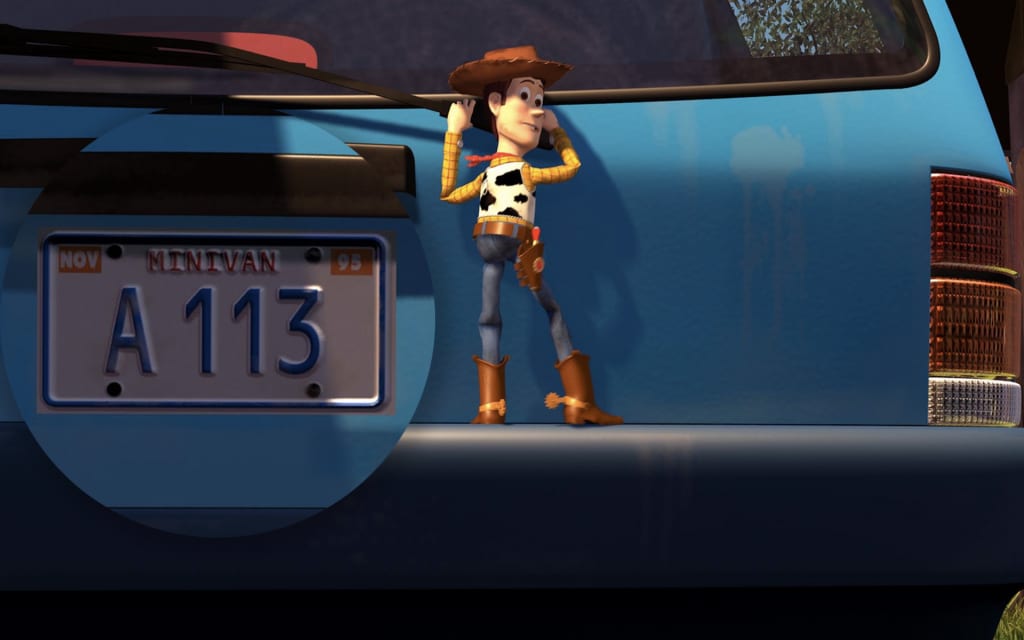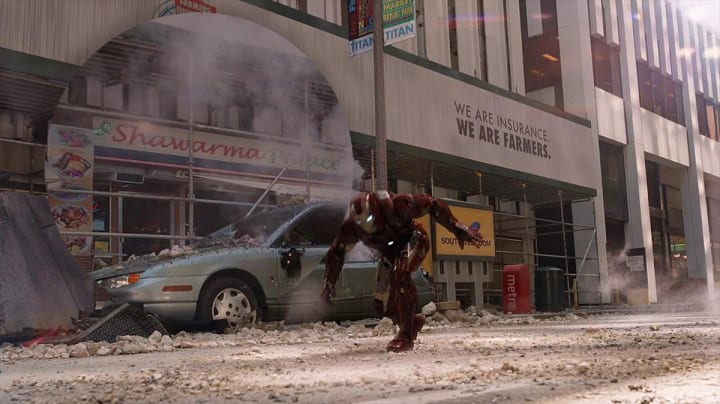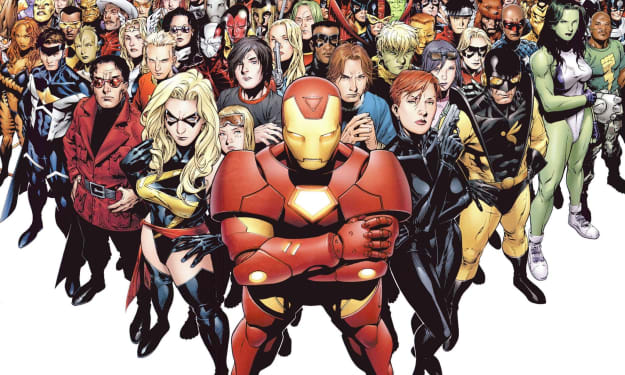History of Digital Easter Eggs
A nod to fans of various film genres, the history of digital easter eggs proves that the hidden gems show no signs of fading out.

Our modern cinema landscape is littered with fan-fueled franchises that continue to expand throughout the decades. With each new high-octane film that emerges, comes an abundance of scattered Easter eggs that tend to separate the causal moviegoers from the hardcore fans.
As we know them, Easter eggs - subtle nods to moviegoers within films and other media - have become somewhat of a staple within fandoms and particular franchises. Despite their recent overwhelming popularity, they’ve actually been around for quite a while.
The OG Easter Egg

It shouldn’t come as much of a surprise that the concept of a digital Easter egg embedded into a form of media, has a geeky history, and not just geeky, vintage geeky – as in 1979 Atari geeky.
One of the first occurrences of what we know now as an Easter egg appeared in the Atari video game, Adventure. Game designer Warren Robinett added in a secret area to the game within which, if you were clever enough to spot it, you could find the line “created by Warren Robinett.” It wasn’t particularly fancy or interesting, just a hidden note. Then why go through all that trouble? Because, relatively unknown fact, back in the early days of video game development, Atari didn’t give credit to its designers in the games themselves. Hence, Robinett took it upon himself to leave behind a secret message.
Since Robinett’s admittance of trickery, other digital Easter eggs have emerged in even earlier media, namely the Fairchild Channel F console, which was made in 1976. In the demo game that came with the system, hitting the 1, 2, and 4 buttons simultaneously at the end of the game would make the name of the programmers Michael Glass and Brad Reid-Selth appear. This clearly isn’t as cool as R2-D2 and C-3PO turning up in Raiders of The Lost Ark, but it was the 1970s and fans took what they could get.
Obviously, hidden messages in media predate the digital age by many, many years. Think of Alfred Hitchcock’s regular cameos in his own films and New Yorker cartoonist Al Hirschfeld hiding the name of his daughter Nina in everything he drew.
With a tradition this longstanding, it’s not surprising that Easter eggs would begin popping up years later in some of our most classic films.
Disney and Pixar Keep it Old School

It’s almost a tradition as old as time, passing our emotional love and admiration for Disney onto generation after generation. Some of the first Easter eggs we probably ever saw, while unaware of it at the time, were hidden within our favorite animated films.
John Lasseter, cofounder of Pixar and now overseer of all animation projects at Disney, is no stranger to the Easter egg world. Both of the companies he's led, particularly Pixar, have included dozens of Easter eggs in their movies. For instance, nearly every Pixar movie is known to include a hidden Pizza Planet truck from Toy Story.
Other Easter eggs are based on real-world locations. There are obvious ones — in the beginning of the 2006 movie Cars, the announcer says the entire town of Emeryville will be closed for the race; Pixar Studios is in Emeryville, California.
Perhaps the most famous of all the Pixar Easter eggs are references to A113. References to A113 can be found in all Pixar movies, some Disney movies, and even in The Simpsons and other animated shows and films. Chances are, if an alum from the California Institute of the Arts is somehow involved, A113 will be included in the animation. That's because A113 is the classroom used by the graphic design and animation students at the school.
The beauty of Easter eggs is that they don’t necessarily have to be clear and concise to make an impact. There is no better way to create long lasting publicity of your film than to leave mysterious clues that fans will relish and ponder over for time to come.
Disney and Pixar are no doubt two of the biggest proprietors of Easter eggs, but there’s also another player in the game who has grown the presence of Easter eggs, and fans looking out for them, from carefully hidden jokes to a key component of a multi-billion dollar industry.
Case in point?
Marvel Studios

Through a carefully systematic and conscious effort, Marvel Studios transformed the casual Easter egg from a fan-pleasing rarity to an essential part of a Marvel viewing experience. More often than not, these Easter eggs serve as scattered clues to a bigger cinematic secret. With the creation of the MCU (Marvel Cinematic Universe), more in-depth and connected stories can be told. With direct connections to Howard Stark and to Thor in reference of the Asgardian myth, it was clear from the very beginning that Marvel was building up to something that would not be encompassed in a single film.
Where an Easter egg was once a carefully hidden secret — a nod to those fans willing to go over the movie with a fine-tooth comb — its definition has quickly grown to incorporate even more elements into the egg hunt.
Post-credits sequences (and even some mid-credits sequences), the ever-surprising appearance of Stan Lee, and future plot line establishing cameos, all soon fell under the Easter egg umbrella; but it was a more revolutionary introduction that ultimately helped change the way the entire Easter egg game was played.
Simply type “Marvel Easter eggs” into Google and your next three days could easily be wiped out. The films themselves are chock full of inside jokes and references to past and future films, but the TV spinoffs also play a big role in Marvel’s Easter egg stake. Because of this, there has never been any confusion that the films and TV shows centered within the Marvel universe are all interconnected.
Marvel has created an entire fan experience around searching out and anticipating these clues. They aren’t simple nods or appreciative winks; they’ve created their own world within worlds, essentially building a franchise within itself.
Long before any Marvel or Disney movie hit theaters, the Internet is flooded with trailers wide open for interpretation. New and old fans attempt to dissect every second for a clue of what’s to come. One find can trigger a firestorm of theories and possibilities.
They say there is nothing like good word of mouth and there is no doubt directors use this to their advantage. Any upcoming film needs good PR and marketing to help ticket sales, but it can also quickly fizzle out if there’s nothing to savor during a second view.
Easter eggs give a platform for fans to analyze, conspire, and create a community around. This conversation creates a buzz that lasts long after the movie has left theaters and leaves everyone wanting more.
What's the Point?
There could be many reasons why filmmakers choose to add Easter eggs to their movies. However, unless they’re asked point blank about a specific hidden clue, it’s unlikely that their fans will know for sure what their motivation was. However, what can be said for certain is that video game, movie, and TV creators are building a treasure hunt for their fans, a map of clues that lead them to an amazing discovery in other mediums. It’s also a subtle connection between them and their supporters, a way of testing just how in tune they are with a certain comic book adaptation or with the Pixar universe. And fans as devoted as they are, there’s no doubt they always be on the lookout for that invisible connection.
About the Creator
Alysha DePerna
Book nerd and lover of all things cheese flavored. Highly skilled at Google and considers coffee medicinal.






Comments
There are no comments for this story
Be the first to respond and start the conversation.